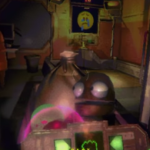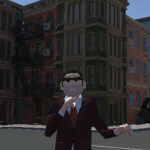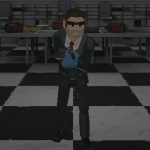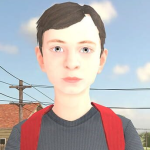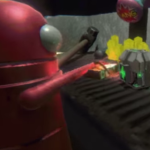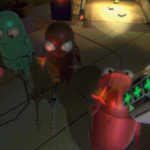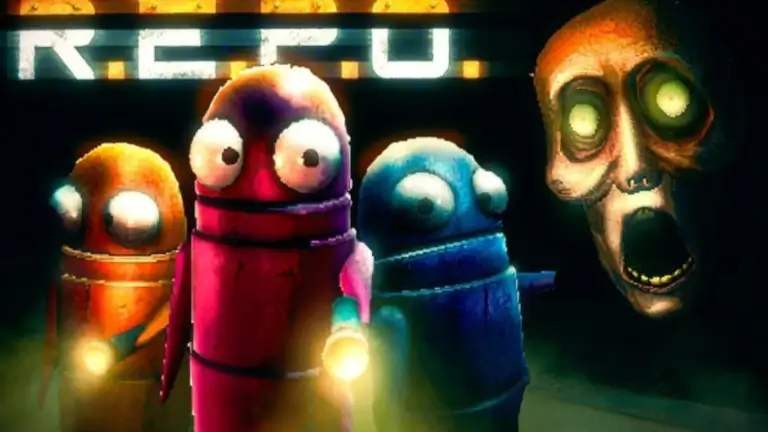

Best Games
Favourite Games
R.E.P.O.

R.E.P.O. is a cooperative horror game built on physics-based interaction and real-time communication. Up to six players take on the role of android workers managed by a mysterious artificial overseer. The objective is to enter derelict zones left behind after the collapse of human civilization, extract valuable objects, and escape alive. Missions require navigating dangerous environments filled with unpredictable enemies, environmental traps, and fragile loot.
Unlike traditional shooters, REPO revolves around careful object handling, environmental awareness, and teamwork. Players don’t just survive—they carry cargo, secure it in carts, and protect it from destruction. A misplaced step, a loud voice, or a dropped item can shatter expensive goods or attract attention. Since items follow realistic weight and momentum, careful coordination is required to ensure that cargo makes it back undamaged.
Physics, Monsters, and Communication
At the center of gameplay is the grabbing tool, which allows players to lift, move, and throw items. Objects respond to gravity and collision forces, so players can use them to create blockades or even as weapons. For example, grabbing and slamming a hostile Gnome into a wall is both efficient and satisfying. Carts serve as mobile extraction points, but if left unattended, they can become monster targets.
Proximity-based voice chat enhances both immersion and difficulty. Talking near certain monsters can trigger attacks, forcing players to whisper, stay silent, or use indirect signals. Each enemy has different behavior patterns, reactions to sound, light, or movement. Here are some of the game’s notable opponents:
- Gnome: Small, fast, and often found in groups. Annoying rather than deadly, but capable of destroying valuables.
- Chef: Heavy melee attacker. Easy to bait but dangerous up close.
- Peeper: Ceiling-based threat that drains health if you stare too long.
- Clown: Uses a tracking laser that destroys players and items. Weak after firing.
- Reaper: Nearly blind but attracted to gravity beams. Easy to evade with crouching.
- Upscream: Stuns and disorients. Harmless alone, but lethal in groups.
- Duck (Apex Predator): Innocent in appearance but transforms into a lethal pursuer if provoked.
Understanding how to counter each threat is crucial. For instance, tranquilizers can incapacitate enemies like Upscreams or the Clown, allowing players to reposition or finish tasks.
Item Management and Extraction Strategy
Loot in REPO ranges from lightweight items like ceramics to large pianos or machinery. Each object has a moment of invincibility after being picked up—ideal for pulling it out of tight spaces. However, once active, they are vulnerable to any collision, including monster attacks or falls. To protect fragile cargo, players can use carts with padded interiors, stack carefully, and avoid narrow passages.
Players should always begin by scouting the area. Mapping the environment and locating objects early allows for efficient routing. The in-game map marks found items and teammate status, including if someone has fallen in combat. After fulfilling the quota, players must retreat quickly, as light fades and monster activity spikes.
Equipment, Upgrades, and Survival Planning
Between missions, players can purchase enhancements using the in-game currency called Surplus. Spending wisely affects future performance. Key upgrade categories include:
- Strength: Carry heavier items or enemies.
- Range: Extend grabbing distance.
- Stamina: Increase running capacity.
- Speed: Improve mobility.
- Health: Raise durability in case of attack.
- Jump and Dash: Access hidden areas or escape ambushes.
Other tools include melee weapons like the sledgehammer, frying pan, and inflatable mallet. Each has distinct behavior: the sword deals high damage but is slow, while the bat can knock enemies into walls. Ranged weapons such as tranq guns and shotguns consume energy, which recharges between missions.
Advanced Tools and Situational Tactics
Later stages introduce high-tier equipment and support drones:
- Mini-carts: For fragile or grouped small items.
- Feather Drone: Reduces item weight.
- Indestructible Drone: Protects one object from damage.
- Recharge Drone: Restores energy without needing to return to base.
- Shock Mines and Grenades: Area control and enemy disruption.
Players can find hidden tools like the magic staff, circular saw, or explosive clown toy. These unique objects provide tactical advantages and may even be sold for cash if not used.
Tactics also involve environmental awareness. Monsters like Trudge or Bowtie can be kited into traps, while Mentalist or Hidden require players to adapt positioning or movement. Cooperation is essential—some enemies target only one player, giving others a window to help or distract.
Tips for Effective Team Play
To increase success rates, players should follow a set of best practices:
- Scout First: Identify threats and items before deploying the cart.
- Protect the Cart: Place it in corners, not pathways, and keep enemies away.
- Use the Map: Open it often to track everything from items to team health.
- Manage Noise: Speak only when safe or needed.
- Support Teammates: Revive downed players by placing their heads in extraction zones or trailers.
- Split Roles: Designate roles—one player scouts, another defends, one manages the cart.
- Buy Smart: Start with strength, range, and stamina. Save for specific tools later.
R.E.P.O. is a test of coordination, adaptation, and tactical planning. With a shifting set of threats, dynamic environments, and no single solution to survival, it encourages experimentation and precision. Each session is unpredictable, driven by player behavior and environmental interactions. Whether lifting a priceless artifact or surviving an ambush in the dark, REPO rewards those who stay alert and work together.
As development continues, additional mods, enemies, and mechanics continue to expand what’s possible. But at its core, REPO remains about risk, timing, and calculated decisions—all under the watch of a machine that only wants one thing: results.
Discuss R.E.P.O.
